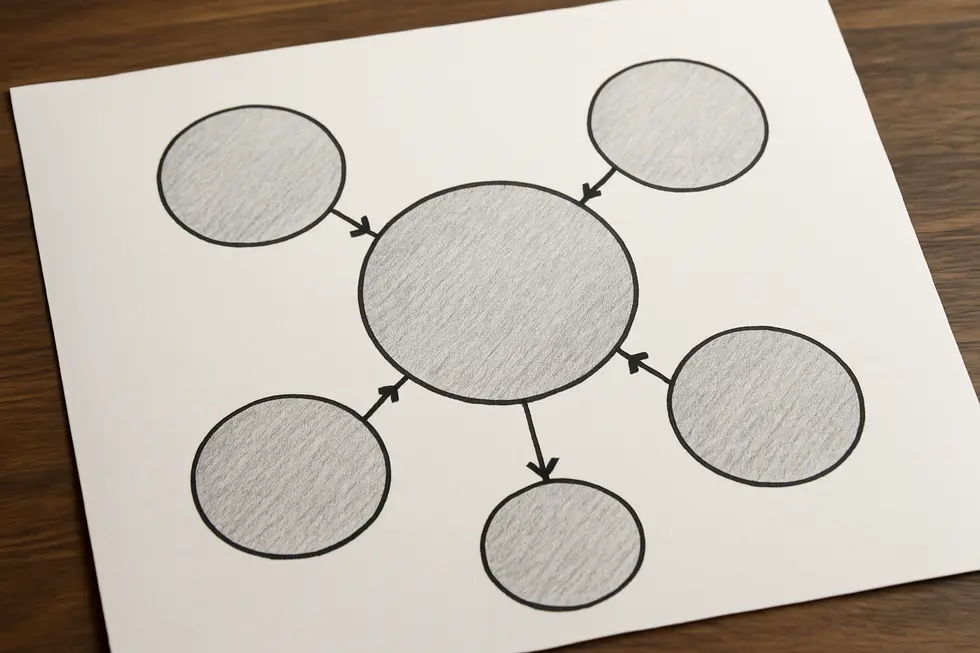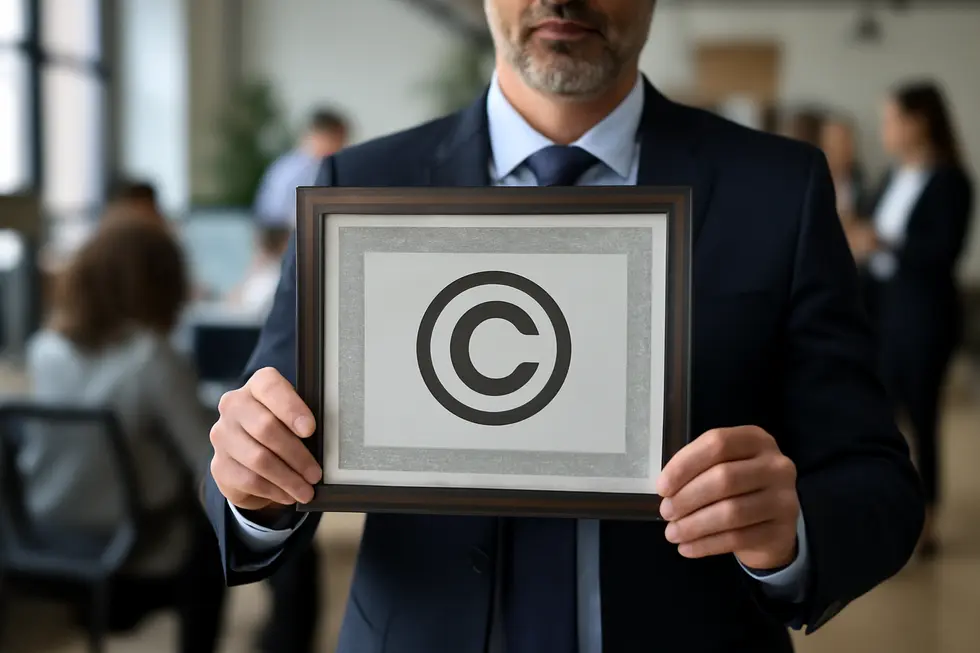Introduction
For business owners, intellectual property is more than just a legal concept—it’s a crucial asset that can define the success and longevity of their venture. Understanding Intellectual Property Rights (IPR), particularly copyright, empowers businesses to protect original ideas, creative works, and innovations from unauthorized use. This knowledge not only safeguards your creations but also opens pathways to monetize and enhance your brand’s reputation. The chapters ahead will guide you through the basics of IPR and copyright, explore their key categories and relationships, emphasize the pivotal role of copyright, clarify the impact of the fair use doctrine, and conclude with an overview of legal protections and moral rights you must understand to defend your assets effectively.
Tables of Contents
Chapter 1: Understanding the Basics of IPR and Copyright
- Navigating Technological Advances: Challenges and Innovations in IPR and Copyright
- Economic Significance: How IPR and Copyright Drive Growth and Innovation
- How Geopolitical Forces Shape Global Perspectives on IPR and Copyright
- Society’s Role in Shaping and Upholding Intellectual Property Rights
Chapter 2: Key Categories within IPR and Their Relation to Copyright
- Navigating Technological Innovations: How IPR Categories Intersect with Copyright in the Digital Age
- Harnessing Economic Growth through IPR: The Integrative Role of Copyright
- Global Tensions and Strategic Interests: Geopolitical Dimensions of IPR and Copyright
- Balancing Innovation, Culture, and Access: The Societal Impact of IPR Categories and Copyright
Chapter 3: The Importance of Copyright within the Framework of IPR
- Navigating Digital Frontiers: Copyright’s Evolving Role Amid Technological Innovation and Enforcement Challenges
- Monetizing Creativity: How Copyright Fuels Economic Growth and Innovation in Creative Industries
- Global Dynamics of Copyright: Harmonizing IP Rights for Economic and Technological Leadership
- Harmonizing Creator Protections and Public Access: The Cultural Impact of Copyright in Intellectual Property Rights
Chapter 4: Fair Use Doctrine and Its Impact on IPR and Copyright
- Navigating Legal Boundaries and Technological Frontiers in Fair Use
- Economic Dimensions of Fair Use: Fueling Innovation While Safeguarding Intellectual Property
- How Geopolitical Forces Shape Fair Use and Global Copyright Dynamics
- Balancing Cultural Growth and Creator Rights through Fair Use
Chapter 5: Legal Protections and Moral Rights under IPR and Copyright
- Balancing Commercial Control and Personal Integrity: Economic and Moral Rights in Copyright Law
- Preserving Creative Identity: The Enduring Influence of Moral Rights in Copyright Law
- Global Variations and International Norms Shaping Moral Rights in IPR
- Balancing Rights and Realities: Assertion, Enforcement, and Boundaries of Legal and Moral Protections
Chapter 1: Understanding the Basics of IPR and Copyright

1. Navigating Technological Advances: Challenges and Innovations in IPR and Copyright
Technological innovation has profoundly influenced how Intellectual Property Rights (IPR) and copyright function in the modern era. The rise of artificial intelligence complicates traditional concepts of authorship, as existing laws typically require a human creator to claim rights, leaving AI-generated works in a legal gray area. Meanwhile, digital rights management (DRM) and blockchain technologies enable more effective tracking and licensing of creative assets, reinforcing creators’ control and provenance in an environment dominated by digital content. Enforcement mechanisms also evolve, with laws such as the Digital Millennium Copyright Act supporting rapid responses to online infringement and piracy. However, the global nature of digital media demands navigating multiple jurisdictions and international treaties to protect rights effectively. Legal professionals must adapt by developing expertise in emerging technologies to safeguard innovation and maintain the balance between creators’ rights and public access. For insights on copyright’s role in business, exploring copyright info for books can be insightful.
2. Economic Significance: How IPR and Copyright Drive Growth and Innovation
Intellectual Property Rights (IPR), especially copyright, play a pivotal role in economic development by empowering creators and businesses to safeguard their innovations and original works. This protection fosters an environment where inventors and artists can confidently invest time and resources, fueling entrepreneurial ventures and job creation across diverse industries such as technology, music, and publishing. For small and medium enterprises (SMEs), effectively managing IPR offers a competitive edge, although costs and enforcement complexities can pose challenges. Furthermore, IPR facilitates knowledge transfer through public disclosure of patents, accelerating technological advancement while balancing creative freedoms. Strong IP frameworks also enhance a country’s attractiveness to international investors, strengthening global market positions. Despite enforcement hurdles like piracy and litigation expenses, understanding these legal protections enables stakeholders to maximize the value of their intellectual assets and contribute meaningfully to broader economic dynamics. For a deeper perspective on copyright’s economic role, see copyright definition economics business.
3. How Geopolitical Forces Shape Global Perspectives on IPR and Copyright
Geopolitical forces significantly influence the landscape of Intellectual Property Rights (IPR) and copyright. Beyond legal frameworks, IPR becomes a strategic tool wielded by nations to safeguard economic interests and assert technological dominance amid international tension. Countries often adapt IP enforcement as part of broader trade and security policies, sometimes weakening protections against geopolitical rivals to serve national agendas. For example, supply chains, especially in pharmaceuticals, reveal vulnerabilities when manufacturing hubs concentrate in geopolitically sensitive regions. Additionally, state-sponsored cyberattacks increasingly target intellectual property, intertwining IP protection with national security concerns. These geopolitical dynamics also shape global debates on balancing IP rights with public needs, such as access to medicine during crises. Recognizing this layered context enriches the foundational understanding of IPR and copyright and highlights their role beyond commerce—as instruments embedded in global power relations. For a deeper dive into copyright fundamentals, consider exploring copyright definition in economics and business.
4. Society’s Role in Shaping and Upholding Intellectual Property Rights
Society’s Role in Shaping and Upholding Intellectual Property Rights
Intellectual Property Rights (IPR) are not merely legal tools; they reflect society’s collective commitment to valuing creativity and innovation. Society relies on IPR to protect industries such as pharmaceuticals, software, and entertainment by granting exclusive rights that incentivize investment and development. However, this protection must balance ethical concerns, including fair access to essential medicines and respect for indigenous cultural expressions. Building a culture that respects IP encourages responsibility and creativity, especially in collaborative and academic environments, where understanding ownership and moral rights matters deeply. Legal frameworks like the Digital Millennium Copyright Act adapt protections to the digital era, seeking to prevent infringement while promoting public access. This societal interplay ensures that IPR fosters innovation, respects cultural diversity, and maintains ethical stewardship of intellectual creations. For more about copyright concepts relevant to businesses, see copyright information example business.
Chapter 2: Key Categories within IPR and Their Relation to Copyright

1. Navigating Technological Innovations: How IPR Categories Intersect with Copyright in the Digital Age
The rapid evolution of technology profoundly shapes Intellectual Property Rights (IPR), especially patents and copyright. Patents protect detailed technical inventions, requiring precise disclosures vital in advanced fields like artificial intelligence and autonomous vehicles. Meanwhile, copyright safeguards the expression of these innovations—covering digital creations such as 3D design files and software code fixed in tangible forms. Unlike patents, copyright does not extend to abstract ideas but protects original creative content, ensuring creators maintain control over reproduction and distribution. Licensing models, including Creative Commons, offer flexible pathways for sharing while preserving rights. Furthermore, emerging technologies not only generate novel IP disputes but also provide tools like AI-driven analytics and dispute resolution platforms that enhance enforcement efficiency. This technological interplay highlights how copyright complements patent protection by securing the creative aspects of innovation, underpinning strategic management in today’s tech-driven industries. Learn more about copyright’s role in protecting creative works in evolving digital environments here.
2. Harnessing Economic Growth through IPR: The Integrative Role of Copyright
Intellectual Property Rights (IPR) drive economic growth by protecting innovation and creativity across sectors. Copyright safeguards artistic and digital works, empowering creators to monetize original expressions through licensing and sales. This protection fuels industries such as publishing, music, film, and software, contributing significantly to cultural and digital economies. Simultaneously, patents stimulate technological advances by granting inventors exclusive rights, encouraging investment and research. Trademarks build brand recognition and consumer loyalty, enhancing market competitiveness and valuation. Trade secrets maintain strategic advantages by keeping critical business information confidential. Additionally, geographical indications add value by linking products to specific regions, supporting local economies. Together, these categories create a robust ecosystem that encourages innovation, supports small businesses, and generates diverse revenue streams. Understanding the economic interplay of copyright within this framework highlights its central role in fostering sustainable growth across creative and industrial domains. For deeper insight, see this resource on copyright definition economics business.
3. Global Tensions and Strategic Interests: Geopolitical Dimensions of IPR and Copyright
Geopolitical dimensions shape Intellectual Property Rights (IPR) frameworks, embedding copyright within broader strategic contests among nations. Countries leverage IP laws to shield technological advances and cultural assets, especially as innovations in AI, pharmaceuticals, and software gain geopolitical weight. The U.S.-China rivalry highlights how patent and copyright regimes serve as tools for maintaining technological dominance and safeguarding national security. Meanwhile, international debates balance stringent IP enforcement against public health and human rights considerations, as seen during crises that demand access to protected knowledge. These tensions extend to innovation ecosystems, where policy decisions like patent taxes may influence entrepreneurial dynamics globally. Moreover, emerging markets craft IP strategies balancing affordability and innovation, complicating global IP governance. Consequently, copyright protection is not only legal but also a geopolitical instrument that influences trade, technology control, and cultural diplomacy. For insights into foundational copyright concepts, explore copyright definition for business owners.
4. Balancing Innovation, Culture, and Access: The Societal Impact of IPR Categories and Copyright
Intellectual Property Rights (IPR) form a critical framework that incentivizes creativity while shaping societal development. Copyright, patents, trademarks, and trade secrets each protect different aspects of innovation and expression, fostering economic growth by encouraging investment and invention. However, this protection also raises cultural and ethical questions: prolonged copyright terms can limit public access to knowledge and slow cultural evolution, while stringent patents may restrict essential innovations, especially in healthcare and environmental solutions. Navigating these tensions requires balancing creators’ rights with society’s interest in access and progress. Technological advances like AI further complicate this balance, demanding flexible IPR policies that promote both creativity and inclusivity. Understanding these societal implications highlights the intertwined nature of economic, cultural, and ethical factors within IPR systems. For an insightful perspective on the economic role of copyrights, see copyright definition economics business.
Chapter 3: The Importance of Copyright within the Framework of IPR

1. Navigating Digital Frontiers: Copyright’s Evolving Role Amid Technological Innovation and Enforcement Challenges
Copyright law is continuously reshaped by rapid digital innovation, balancing creator protections with technological progress. The rise of generative AI challenges traditional frameworks, particularly concerning the use of copyrighted material in AI training datasets. Landmark cases illustrate tensions about whether such uses qualify as transformative fair use or infringement. Additionally, the decentralized nature of modern digital platforms complicates enforcement, as traditional mechanisms like the DMCA adapt to environments lacking centralized control. Emerging technologies, including 3D printing, expand the reach of copyright into new realms where digital design files and physical reproductions intersect. Simultaneously, AI tools enhance intellectual property management but raise questions on originality and legal compliance. These technological dimensions emphasize copyright’s pivotal role in both protecting creators and facilitating innovation. For more in-depth understanding, see insights on copyright language for business owners.
2. Monetizing Creativity: How Copyright Fuels Economic Growth and Innovation in Creative Industries
Copyright is a cornerstone within Intellectual Property Rights, transforming creative works into valuable economic assets. It grants creators exclusive control over reproductions and distribution, enabling them to generate ongoing revenue through licensing, sales, and strategic partnerships. This exclusivity not only secures income streams but also encourages reinvestment in innovation, cultivating sustainable creative enterprises and job creation. Robust copyright protection helps startups and established businesses maintain competitive advantage and brand integrity by safeguarding proprietary content. However, emerging technologies like artificial intelligence challenge traditional copyright economics, potentially diminishing revenues from creative outputs unless new legal frameworks evolve to protect human authorship. Balancing the protection of creators’ rights with adapting to technological advances remains essential for maintaining copyright’s role in driving economic growth. For more insight into copyright’s economic role, see copyright-definition-economics-business.
3. Global Dynamics of Copyright: Harmonizing IP Rights for Economic and Technological Leadership
Copyright serves as a pivotal instrument in geopolitics, linking the protection of creative works to global economic strength and technological leadership. Countries leverage copyright standards within international agreements to secure competitive advantages and foster innovation. Harmonizing diverse national IP laws remains challenging, as legal traditions and enforcement capacity differ worldwide. Emerging technologies like artificial intelligence also intensify these complexities, raising new copyright questions and prompting stricter controls to safeguard domestic innovation while regulating foreign access. International cooperation becomes essential to enable cross-border technology transfer and joint research, balancing national sovereignty with the demands of a connected knowledge economy. This interplay shapes trade relations and global competitiveness, making copyright a critical factor in worldwide innovation ecosystems. For business owners looking to navigate these complexities, understanding copyright fundamentals within varying geopolitical contexts is increasingly vital.
4. Harmonizing Creator Protections and Public Access: The Cultural Impact of Copyright in Intellectual Property Rights
Copyright is a vital element within the Intellectual Property Rights framework, balancing the protection of creators’ interests with the public’s need for access to knowledge and culture. By granting exclusive rights to authors for a limited time, copyright incentivizes creation and supports the economic sustainability of cultural industries. Simultaneously, the concept of fair use ensures that limited, transformative uses of copyrighted material can occur without permission, facilitating education, criticism, and innovation. Over time, copyright’s expiration enriches the public domain, allowing society unrestricted access to cultural works that foster ongoing creativity. This balance sustains cultural development by nurturing both the creative economy and the collective heritage. Addressing challenges in the digital era—such as the spread of uncredited content—requires evolving norms to respect copyright while enabling cultural exchange. For foundational concepts on copyright and public access, see copyright law and the public domain.
Chapter 4: Fair Use Doctrine and Its Impact on IPR and Copyright

1. Navigating Legal Boundaries and Technological Frontiers in Fair Use
The fair use doctrine serves as a nuanced legal principle balancing copyright holders’ exclusive rights with public interests. Rooted in 17 U.S.C. § 107, fair use is evaluated through a four-factor test considering purpose, nature, amount, and market effect. Courts apply this doctrine flexibly, adapting it to evolving media landscapes. Technological advances, particularly digital distribution and artificial intelligence, pose new challenges and opportunities for fair use. Digital platforms amplify both copyright protection concerns and fair use applications like commentary and education. AI’s reliance on copyrighted data for training highlights fair use’s role in fostering innovation when uses are transformative and noncompetitive. Landmark rulings, such as in Authors Guild v. Google, affirm digitization and data extraction as fair use under certain conditions. Ultimately, these legal and technological dimensions ensure fair use remains integral to promoting creativity and knowledge while redefining boundaries within Intellectual Property Rights. For more insights on copyright, see copyright language for business owners.
2. Economic Dimensions of Fair Use: Fueling Innovation While Safeguarding Intellectual Property
The fair use doctrine plays a pivotal role in balancing economic growth with intellectual property rights. By permitting limited, transformative use of copyrighted materials, it enables high-tech sectors—such as software development and search technologies—to innovate rapidly. This exception contributes over $4.5 trillion annually to the U.S. economy, highlighting its critical economic influence. However, fair use also challenges traditional IPR frameworks, especially with emerging technologies like artificial intelligence. Courts increasingly assess whether using copyrighted data to train AI qualifies as fair use, weighing transformation against market impact. While fair use promotes innovation and access, it requires thoughtful policy to protect creators’ rights and maintain industry sustainability. For businesses navigating copyright complexities, understanding the economic role of fair use alongside protections such as copyright law and public domain is essential to fostering both creativity and lawful use.
3. How Geopolitical Forces Shape Fair Use and Global Copyright Dynamics
The Fair Use Doctrine profoundly interacts with geopolitical forces, influencing how countries define and enforce intellectual property rights. Nations vary widely in enforcing fair use, with some valuing broad access to foster innovation and others prioritizing strict protections to support domestic industries. This divergence creates friction in international trade and complicates diplomatic relations, as intellectual property becomes a lever in economic and strategic negotiations. For example, trade tensions often spotlight IP enforcement, where countries impose tariffs or seek alliances based on shared IP norms. Amid public health crises or scientific collaboration, calls for balancing public interest with IP rights reshape global approaches, advocated by organizations like WIPO. Thus, fair use evolves beyond legal doctrine, becoming intertwined with national security, economic policies, and cultural diplomacy, shaping how global IP frameworks adapt to shifting geopolitical landscapes. For deeper insight on copyright fundamentals applicable in diverse contexts, see copyright definition for business owners.
4. Balancing Cultural Growth and Creator Rights through Fair Use
The fair use doctrine plays a pivotal role in fostering cultural innovation by allowing limited use of copyrighted works without formal permission. This legal flexibility nurtures creativity in areas like parody, criticism, and educational use, which enrich public discourse and cultural dialogue. It also underpins internet phenomena such as meme culture, enabling social commentary and humor that build on existing creative content. However, fair use simultaneously challenges the boundaries of intellectual property rights by serving as a necessary check against overly restrictive copyright enforcement that could stifle innovation and knowledge sharing. Emerging technologies like artificial intelligence rely on fair use for transformative applications, as AI systems use large volumes of copyrighted data to develop new tools without directly competing with original works. Navigating the balance between protecting creators’ economic interests and encouraging technological and cultural progress remains an evolving challenge, influenced by ongoing judicial interpretation and legislative efforts. For insights on the broader scope of intellectual property, see this resource on categories of intellectual property rights.
Chapter 5: Legal Protections and Moral Rights under IPR and Copyright

1. Balancing Commercial Control and Personal Integrity: Economic and Moral Rights in Copyright Law
Economic rights form the commercial foundation of copyright, granting creators exclusive control to reproduce, distribute, and adapt their works. These rights enable monetization for a limited term, typically extending through the creator’s life plus decades, fostering innovation by rewarding creative effort. In contrast, moral rights emphasize the personal and reputational bond between the creator and the work. They ensure the right of attribution and safeguard against distortion or misuse that could damage the creator’s honor. Unlike economic rights, moral rights are generally inalienable and often endure beyond the term of economic protection. This dual system balances financial incentives with respect for the author’s identity and artistic integrity. International frameworks, such as the Berne Convention, uphold both rights to encourage not only commercial use but also ethical treatment of intellectual creations. For a deeper understanding of copyright’s role in business and economics, exploring copyright definition economics business offers valuable insights.
2. Preserving Creative Identity: The Enduring Influence of Moral Rights in Copyright Law
Moral rights within Intellectual Property Rights serve to protect creators beyond economic interests, focusing on personal connections to their works. Central to these rights are attribution—ensuring creators receive recognition for their work or the choice to remain anonymous—and integrity, which guards against alterations that could harm the creator’s reputation or artistic vision. Established internationally by Article 6bis of the Berne Convention, moral rights stand apart from traditional economic rights as they are generally perpetual and inalienable. While some jurisdictions like the United States limit these protections under statutes such as VARA, others, like India, enforce them rigorously without waiver, emphasizing both honor and attribution. By safeguarding the creator’s personal and reputational interests, moral rights affirm the profound personal bond between artist and creation. For more on the economic and legal dimensions of copyright, see copyright definition and economics.
3. Global Variations and International Norms Shaping Moral Rights in IPR
International treaties like the Berne Convention establish foundational standards for copyright and moral rights, including the rights of attribution and integrity. While these rights protect creators’ personal interests—such as being credited and preventing harmful alterations—their practical application differs widely across jurisdictions. Civil law countries like France, Germany, and India enforce strong, often perpetual moral rights that cannot be waived, maintaining authors’ control over their reputation even after economic rights are transferred. By contrast, common law countries such as the United States and the United Kingdom offer narrower moral rights, frequently limited to visual arts and permitting waivers via contract. Additional treaties, like the WIPO Copyright Treaty and TRIPS Agreement, further shape global IP frameworks, but enforcement disparities and emerging challenges, like AI-generated creations, complicate moral rights protection. These differences underscore a complex international landscape where creators’ personal and economic rights must be carefully balanced and understood within varying legal systems. For more on copyright categories and protections, see our detailed discussion on categories of intellectual property rights.
4. Balancing Rights and Realities: Assertion, Enforcement, and Boundaries of Legal and Moral Protections
Legal protections under intellectual property rights (IPR) and copyright enable creators to assert exclusive economic rights, including reproduction and distribution of their works, alongside moral rights such as attribution and protection against harmful alterations. These rights are buttressed by international treaties and national statutes, providing a framework that honors both financial and personal interests of authors. Enforcement typically involves judicial processes where infringements may result in injunctions or damages, while moral rights, though recognized variably across jurisdictions, rely on both legal avenues and societal norms to uphold a creator’s legacy. Yet, these protections have intrinsic limitations: copyright does not cover ideas or facts alone, and moral rights can be waived or are limited in scope, especially outside specific art forms. Understanding these nuances is essential for effectively managing intellectual property within its complex legal ecosystem. For more on copyright nuances in commerce, explore relevant guidance on copyright language for business owners.
Final thoughts
For business owners, mastering the landscape of Intellectual Property Rights and copyright is essential to securing and maximizing the value of their creative and innovative assets. Understanding the basics clarifies how IPR categories intersect and support each other, with copyright playing a vital role in protecting original works that add unique value to a business. Navigating the fair use doctrine equips owners with knowledge to responsibly leverage existing content without infringing rights, while strong awareness of legal protections and moral rights ensures lasting control and recognition of their intellectual contributions. Ultimately, these protections foster a safe and competitive business environment where innovation thrives and assets are legally secured.
Your IP is the foundation of your success – let’s protect it together before it’s too late. We can’t wait to help you turn your ideas into legally secured assets.
About us
undefined


